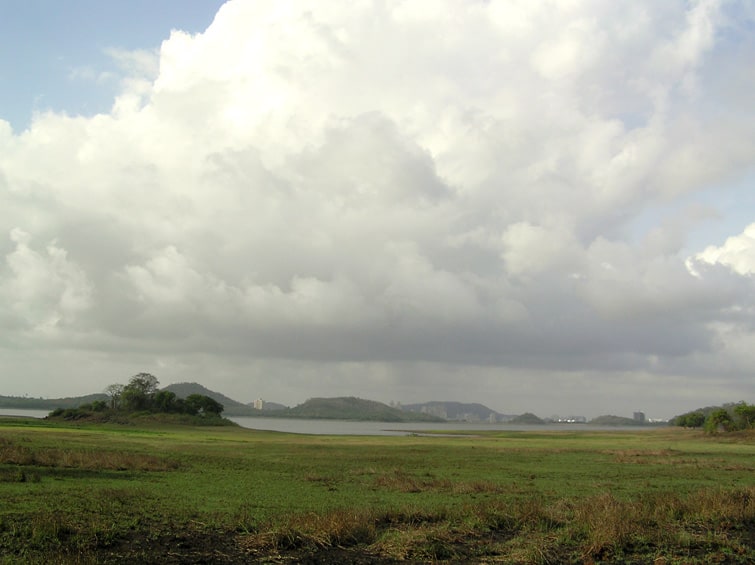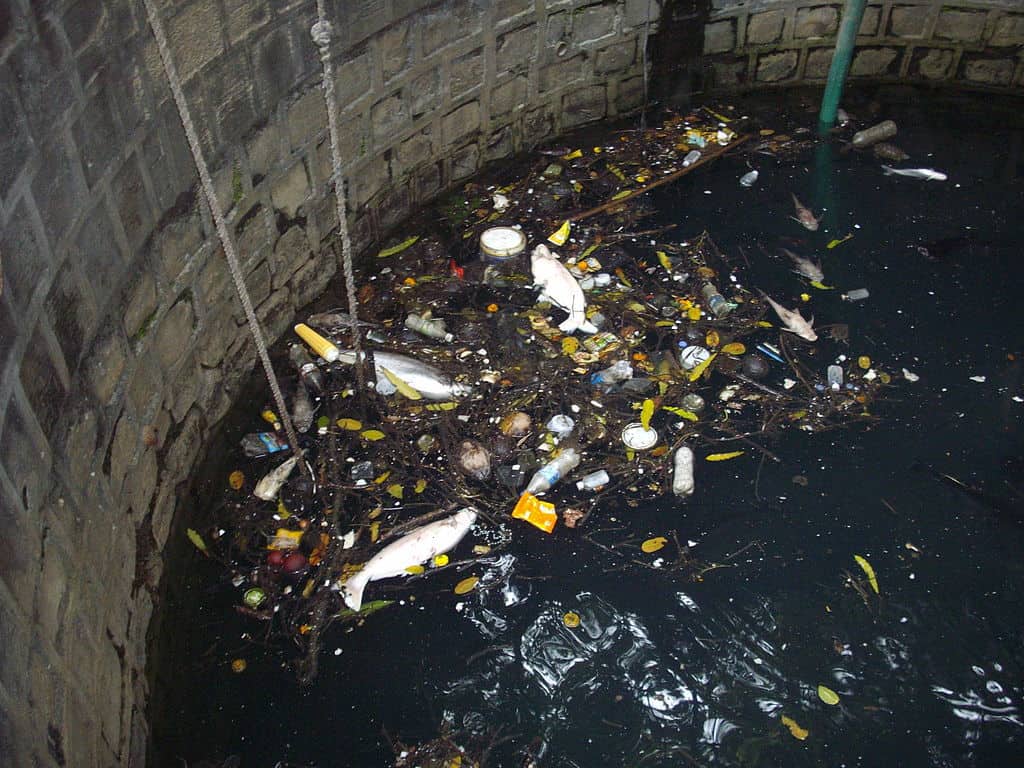In the mid 19th century, Bombay got its water from 136 public wells and tanks such as Gowallia Tank, Babula and Byculla, Nagpada, Framji Cowasji and Cowasji Patel Tanks. Most of these were built by citizens, writes Mariam Dossal in her book Imperial Designs and Indian Realities: The Planning of Bombay City.
By 1845, trade flourished in Bombay, the population doubled (from what it was 25 years ago), and the scarce water resources came under severe stress. These water sources were dependent on rain, and whenever the rain failed, water supply diminished. Like tankers today, the British government would ply water trains to supply water to the masses.
Then in 1846, Captain J H G Crawford, a consulting engineer to the government, drew up a proposal to construct a bund in the Vihar Valley, about 10 kms from central Mumbai. This converted a large part of the area into a lake and provided 100,000 gallons of water per hour to Bombay throughout the year, Mariam writes. This was also the time when iron pipes were laid out from Cooperage to Colaba causeway, primarily for the British troops.
Vihar water was first piped into Bombay, Mariam writes, in 1859. but its distribution from “the main pipe to feeder pipes, tanks and cisterns took another five years”. By 1864, this water was already proving to be inadequate. But the Vihar project had “changed civic paradigms” and transformed the city. It showed the municipality a new way of addressing water shortage: they could use public money to source water from outside the city. This set in motion the construction of multiple water projects near Bombay: from Tulsi to Tansa. It’s a trend that continues to date with projects planned on the Gargai, Pinjal, and Damanganga rivers.

In 1879, work on the Tulsi project was completed and it provided 15 million litres of water per day to the city. The Powai project followed supplying
another four million liters per day. But even these did not prove sufficient for Bombay’s growing needs, so the municipal engineers planned the Tansa Dam which provided an additional 420 million liters per day. Despite this, water shortage continues to make news every summer in Mumbai. “The shortfall between Mumbai’s water demand and supply”, Nikhil Anand writes in his book Hydraulic City: Water and the Infrastructures of Citizenship in Mumbai, “according to the city water department, (has) never been bridged”. Nikhil emphasises “according to the city department” because he believes that “the case of water scarcity is carefully crafted and made by overestimating the city’s water demand”.
Read more: An apartment complex saved 187 houses from going dry. Here’s how.
Mumbai’s water supply sources
| Sources | Yield (Million Litres/Day) | Percent |
| Tulsi | 18 | 0.54 |
| Vihar | 110 | 3.28 |
| Tansa | 417 | 12.45 |
| Upper Vaitarna | 1025 | 30.60 |
| Bhatsa | 1650 | 49.25 |
| Mumbai – III | 150 | 4.48 |
| Sub-total | 3350 | 100 |
| En-route supply | 120 | -3.58 |
| Total water supply | 3230 | 96.42 |
When Brihanmumbai Municipal Corporation (BMC) engineers quote water figures, they are referring to the Report of the Expert Committee (Water Planning) on Bombay’s Future Water Resources and Improvement in Present Water Supply Scheme (Municipal Corporation of Greater Mumbai, 1994 or the Chitale Committee Report. They claim that Mumbai needs over 4000 million litres of water every day and that the existing per capita consumption of a Mumbai resident is 240 liters per day. “An amount,” Nikhil writes, “that compares to the per capita water use in London and Paris”
The numbers are inflated on two accounts, according to Nikhil’s research: i) at an pan-city level, where the city’s population growth is overestimated and ii) at an individual level where “the city homogenizes all of its residents to produce a single figure for per capital water demand, determined not by actual use but instead by extrapolation”.
Ground Water
Mumbai thinks about its wells and groundwater only when the monsoons fail. Activists claim that BMC ignores the possibility of using wells as an alternative source of water and that thousands of wells have been claimed due to a “development frenzy”. Nikhil’s book discusses how after the deficient 2009 monsoon, BMC, which previously claimed that the city had 4,000 wells, found 12,351. The current number, however, is wrapped in secrecy.

In 2018, Sureshkumar Dhoka, a Right to Information activist, asked the Maharashtra Water Resources Regulatory Authority (MWRRA), an agency designated to implement Maharashtra’s Groundwater Act, 2009, and the Groundwater Survey and Development Agency (GSDA) for details on “the number of legal and illegal wells in the city, the action against illegal wells, and the penalty levied on illegal wells.” GSDA said that its survey is not complete. A quick search of GSDA’s surveys shows that a report on the “dynamic ground water resources of Maharashtra” exists, but these estimations are for all cities except Mumbai and its suburban districts.
The problem is not just of surveys but of rules themselves. The Maharashtra Groundwater (Development and Maintenance) Act, 2009 has remained unimplemented in Mumbai. It’s only in 2018 that news reports discussed the drafting of rules. Then, in 2019, it was reported that Mumbai police booked six people for theft of groundwater from two illegal wells at Kalbadevi in south Mumbai. This, Hindustan Times claimed, was probably the first such arrest in Maharashtra.
But the question of groundwater is not only of legality, it’s also of quality. Groundwater at higher elevation in Mumbai is suitable for drinking, according to a report by the Central Ground Water Board. The rest is polluted due to “sewage and industrial effluents which are being disposed indiscriminately into the surface water bodies. The ground water in the district is quite vulnerable to contamination from leakage of sewage pipelines.” Municipal engineers fortify the findings of this report. Nikhil discusses in his book how engineers point to the “percolation
and pollution of the city’s water table by industrial and human waste, especially because of the city’s partial and leaky sewerage system.”
Read more: Simple answers to Mumbai’s complicated water scarcity issues
The infamous tanker mafia
Across the city, both high-rise societies and settlements face irregular and insufficient water supply and rely on tankers. Often addressed as the “tanker mafia”, media reports breathlessly discuss how groundwater is being exploited by the city’s tanker vendors. But Lisa Björkman’s research in her book Pipe Politics, Contested Waters: Embedded Infrastructures of Millennial Mumbai shows that tankers filling water from designated filling stations is standard practice.
BMC has a comprehensive policy for water supply through tankers. It notes that applications can make a request to the Assistant Engineer Water Works and avail a tanker. In case of disruption of water supply, this is made available free of cost, but in other cases, there’s a charge. In 2016-17, the filling cost (paid by the tanker company) was Rs 110, whereas the hiring charge (paid by buyer) was Rs 970. As taking permission is based on a chalaan system, Lisa’s research shows that those hiring the taker don’t pay the filling cost themselves, “rather a copy of the signed letter is generally given to the tanker company, which pays the fee and collects a flat rate (usually a premium) from the receiving party”.
Deepak Kadam, a secretary in a Kandivali society, has tied up with a vendor to deal with the irregular water supply in his society. “We pay Rs 1,300 for 10,000 litres of water to the vendor who takes all the permissions. If we were to do it ourselves, it would take all day.”
These tankers are authorised to fill water only from designated filling centres but many have dug surface wells and borewells to extract ground water. A practice also followed by real estate developers in the city. But despite a pending survey, BMC claim that Mumbai’s underground water can meet only 6% of the city’s water needs. “Suffice it to say that these claims justify and allow engineers to focus on the public, dam-dependent paradigm of water supply,” Nikhil Anand writes, “and forget more proximate sources of water.”
Also read:
- Mapping floods: is Mumbai at the risk of being submerged?
- Explainer: why Mumbai is inundated every monsoon (citizenmatters.in)